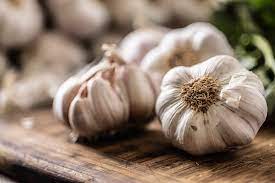Asthma, a chronic respiratory condition affecting millions worldwide, necessitates diligent management and lifestyle adjustments. Amidst various remedies, garlic sticks out as a potential natural ally in asthma management.
Renowned because of its culinary and medicinal properties, garlic has intrigued researchers and health enthusiasts alike. But does this pungent herb hold promise for asthma patients? This comprehensive guide delves in to the scientific evidence, potential benefits, and considerations surrounding garlic’s role in asthma management.
Understanding Asthma
Before exploring the potential of garlic being an asthma remedy, it’s crucial to grasp the character of asthma itself. Asthma is a chronic inflammatory condition characterized by airway constriction, excessive mucus production, and recurring symptoms like wheezing, coughing, and shortness of breath. Triggers vary among individuals and can include allergens, pollutants, respiratory infections, and even stress. Effective asthma management involves a multifaceted approach, including medication, lifestyle modifications, and potentially, complementary therapies like garlic supplementation.
Inhaler For Treat Asthma : Orange Inhaler
Exploring Garlic’s Nutritional Profile
Garlic, scientifically called Allium sativum, has been revered for centuries because of its culinary and medicinal virtues. Rich in essential nutrients and bioactive compounds, garlic boasts an impressive nutritional profile. It contains vitamins C and B6, manganese, selenium, and trace amounts of other minerals. Moreover, garlic owes a lot of its health-promoting properties to organosulfur compounds like allicin, which exhibit potent antioxidant and anti-inflammatory effects. These compounds are believed to underpin garlic’s potential therapeutic benefits, including its purported role in managing asthma symptoms.
Garlic’s Anti-inflammatory Properties and Asthma Management
Inflammation lies at the core of asthma pathogenesis, making anti-inflammatory interventions integral to its management. Garlic’s rich array of bioactive compounds, particularly allicin, has garnered attention due to their anti-inflammatory properties. Research shows that garlic may help modulate inflammatory pathways, thereby potentially mitigating airway inflammation characteristic of asthma. Furthermore, garlic’s antioxidant properties may counteract oxidative stress, a hallmark of asthma exacerbations. While further clinical studies are warranted, preliminary evidence shows that incorporating garlic into the dietary plan may offer adjunctive benefits in asthma management.
Garlic and Immune Function: Implications for Asthma
The interplay between asthma and the immune system underscores the significance of immune-modulating interventions. Garlic’s immunomodulatory effects have now been the topic of scientific inquiry, with studies highlighting its ability to bolster immune function and resilience against infections. Considering the fact that respiratory infections often trigger asthma exacerbations, enhancing immune defense mechanisms holds therapeutic promise for asthma patients. Garlic’s ability to support immune health may thus indirectly contribute to asthma management by reducing the likelihood of respiratory infections and associated exacerbations.
Garlic as a Potential Bronchodilator
Bronchodilators play a pivotal role in relieving bronchial constriction and improving airflow in asthma patients. While garlic’s bronchodilatory effects remain speculative, anecdotal evidence and preclinical studies suggest potential in this regard. Allicin and other sulfur-containing compounds present in garlic may exert smooth muscle-relaxant effects, similar to conventional bronchodilator medications. However, robust clinical evidence supporting garlic’s bronchodilatory properties in asthma patients is lacking, necessitating further research to elucidate its therapeutic potential in this domain.
Incorporating Garlic in to the Asthma Diet
Practical strategies for incorporating garlic in to the asthma diet can empower patients to harness its potential benefits effectively. Raw garlic, when crushed or chopped, releases allicin, maximizing its bioavailability and therapeutic potential. Incorporating garlic into culinary preparations like soups, stir-fries, sauces, and salads can infuse dishes with flavor while promoting respiratory health. For those averse to the pungent aroma and taste of raw garlic, aged garlic supplements offer a convenient alternative, providing standardized doses of bioactive compounds minus the characteristic odor.
Conclusion
While garlic holds promise as a complementary therapy for asthma management, conclusive evidence supporting its efficacy remains elusive. Its anti-inflammatory, immunomodulatory, and potential bronchodilatory properties underscore its relevance in respiratory health. However, further clinical research is warranted to elucidate garlic’s specific mechanisms of action and its role in asthma prevention and treatment. Nevertheless, incorporating garlic into a balanced diet may offer asthma patients one more layer of support inside their pursuit of optimal respiratory wellness.





